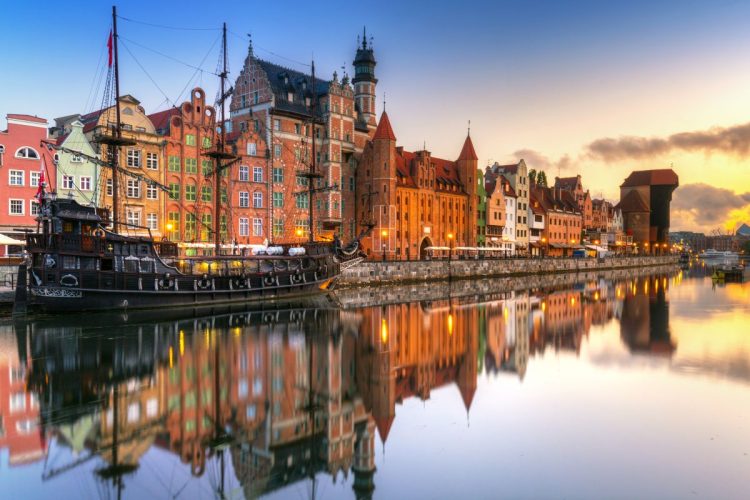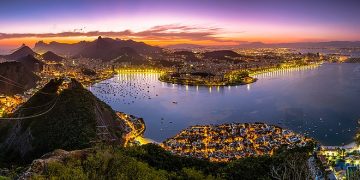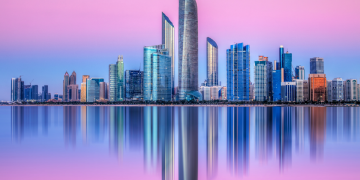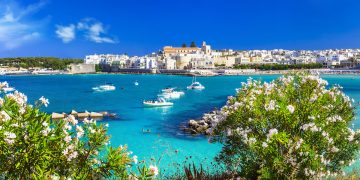Gdańsk and Sopot’s Boutique Boom
In 2025, Poland’s northern coast has become an unexpected darling of millennial travel culture. Once overlooked in favor of Croatia’s Dalmatian riviera or Portugal’s Algarve, cities like Gdańsk and Sopot are experiencing a vibrant renaissance. The charm lies not just in the cobbled lanes and golden beaches, but in the buzzing boutique hostels, edgy art scenes, and a travel-savvy crowd looking to escape overpriced tourist traps. A wave of independent accommodations has reshaped the accommodation landscape. Hostels now come with rooftop yoga, coworking lounges, and cold brew on tap. In Gdańsk’s Old Town, restored Hanseatic buildings host open-mic nights and digital nomad socials, while Sopot’s beachside villas have turned into eco-chic stays with organic breakfast bowls and Baltic sea views. The hostels aren’t just beds—they’re branded experiences. For younger travelers seeking community, style, and a bit of creative freedom, this Baltic region delivers exactly that.
Affordable Seaside Vibes Without the Crowds
What sets Poland apart from its more saturated Mediterranean neighbors is its balance of affordability and space. Summer in Sopot costs a fraction of what you’d spend in Ibiza or Nice. A beachfront meal of pierogi, grilled fish, and local cider can come in under €10. Lodging averages €40 a night for stylish hostels or minimalist Airbnbs, and train travel remains ridiculously cheap, with panoramic views of sand dunes and pine forests en route. But more than the price, it’s the pace that matters. There’s a laid-back rhythm to the Baltic. Mornings are made for espresso and fresh challah by the Motława River; afternoons bring swims under a cloud-streaked sky and evenings glow with bonfires and folk guitar along the beach. The coast never feels crammed. Even in peak July, you can find wide stretches of quiet shoreline near Gdynia or Ustka, ideal for hammock reading or drone photography. It’s a slower, more deliberate kind of summer—one that resonates deeply with millennial travelers tired of rushing through Europe.
The Digital Festival Factor
A new wave of digital-native events has further put the Polish coast on the millennial map. From blockchain meetups in Gdańsk’s old granaries to sound-bath sessions in the Sopot woods, there’s a thriving culture of low-key innovation. Local creative hubs like 100cznia—an industrial venue made from shipping containers—host everything from AI-art installations to sustainability panels paired with street food markets. Summer 2025’s lineup includes a “Remote Work Regatta,” combining workshops with sailing lessons in Hel, and a “Seaside Hackathon” where programmers gather inside lighthouses to pitch green-tech startups. These events blur the line between vacation and vocation, giving remote workers and creators a reason to linger beyond a weekend. The Wi-Fi is reliable, the views are unbeatable, and the schedule is always yours to write.

Culture and Nightlife in the Coastal Air
History buffs can immerse themselves in Gdańsk’s layered past—from Gothic churches to the shipyards where the Solidarity movement began. Museum visits feel alive here, with digital exhibits that blend historical footage and VR reconstructions. Sopot, meanwhile, leans into hedonism. Long known as the St. Tropez of the North, its wooden pier is now flanked by stylish cocktail bars, record-listening cafés, and gender-inclusive beach clubs. Nightlife pulses not just in underground clubs but also in converted warehouses playing deep house at dawn. Locals mix with tourists over shots of żubrówka and late-night herring toasts. Cultural life is not confined to galleries either. Murals bloom on skate parks, jazz trios perform on sea-facing balconies, and Polish poetry is found stenciled onto bike lanes. There’s a deep-seated pride in making art public and democratic—something that resonates with socially conscious younger travelers.
Nature, Cycling Trails, and Cold-Water Swims
When it comes to natural beauty, Poland’s Baltic Coast is a chameleon. The Slowinski National Park offers otherworldly sand dunes that shift like desert waves. The Vistula Spit—a narrow stretch of land between the sea and lagoon—is a hidden cyclists’ paradise. Coastal forests brimming with mushrooms, wildflowers, and ancient oaks offer miles of hiking routes, while the waters, though cold, are increasingly attracting wild swimmers and Wim Hof devotees. Local guides are now offering cold-immersion forest bathing packages, mixing ice dips with breathwork and sauna rituals. Birdwatchers head to the Biebrza Marshes while windsurfers carve through the bay near Chałupy. Whether you’re a sunrise jogger or a sunset drone pilot, the light and wind of this region beg to be noticed. The appeal is tactile and elemental—travel as reconnection to the raw.
From Farmer’s Markets to Baltic Cuisine
Food here isn’t just delicious—it’s deeply local, seasonal, and photogenic. Start with breakfast at a local bazar: wild berries, smoked cheeses, and fresh-baked rye from countryside grandmothers who’ve been pickling vegetables since the Cold War. In the afternoon, join a Baltic cooking class in a seaside cottage where you’ll smoke mackerel over seaweed and learn to infuse vodka with dill and forest pine. Sopot’s restaurants serve dishes like sea buckthorn sorbet and beet carpaccio with goat cheese from Kashubia. Farm-to-table is not a trend here—it’s tradition. The Baltic Sea’s bounty is ever-present: sprats, herring, and cod prepared with tangy pickled onions and horseradish foam. Young chefs returning from Copenhagen or London are reviving their grandmother’s recipes with a modern twist. There’s even a movement around zero-waste fish cooking, with cafes offering “fin to tail” tasting menus. Food markets have become social hubs. Think fermented strawberry kombucha, sea-salt caramels, and vegan sausage made from lentils and mushrooms. Every bite is both a taste and a story.
Why This Region Resonates with Millennial Travelers
Millennials aren’t just chasing sunshine—they’re curating meaning. They want affordable but elevated. Remote but connected. Quiet but creative. Poland’s Baltic Coast nails this balance in 2025. It offers natural grandeur without the pretension, culture without queues, and social impact without preaching. As Western Europe contends with over-tourism and climate-fatigue, travelers are increasingly turning east—not just for lower costs but for deeper immersion. The coast’s calmness, its digital fluency, and its celebration of lived culture strike a chord with a generation defined by fluid identity, flexible work, and emotional transparency. Whether you’re hopping on a night train from Kraków or biking down the coast with a portable espresso maker, the Polish Riviera gives you the space to experience—not just see. And that may be why it’s no longer a secret.
Conclusion
In 2025, Poland’s Baltic Coast stands as the quiet disruptor of European travel trends. Gdańsk and Sopot offer more than seaside postcards—they deliver a fresh blueprint for affordable, authentic, and emotionally resonant travel. While mainstream destinations chase spectacle, the Baltic whispers connection. For millennials who value digital freedom, cultural depth, and natural texture, this coastal stretch is no longer an alternative—it’s the main event.





















